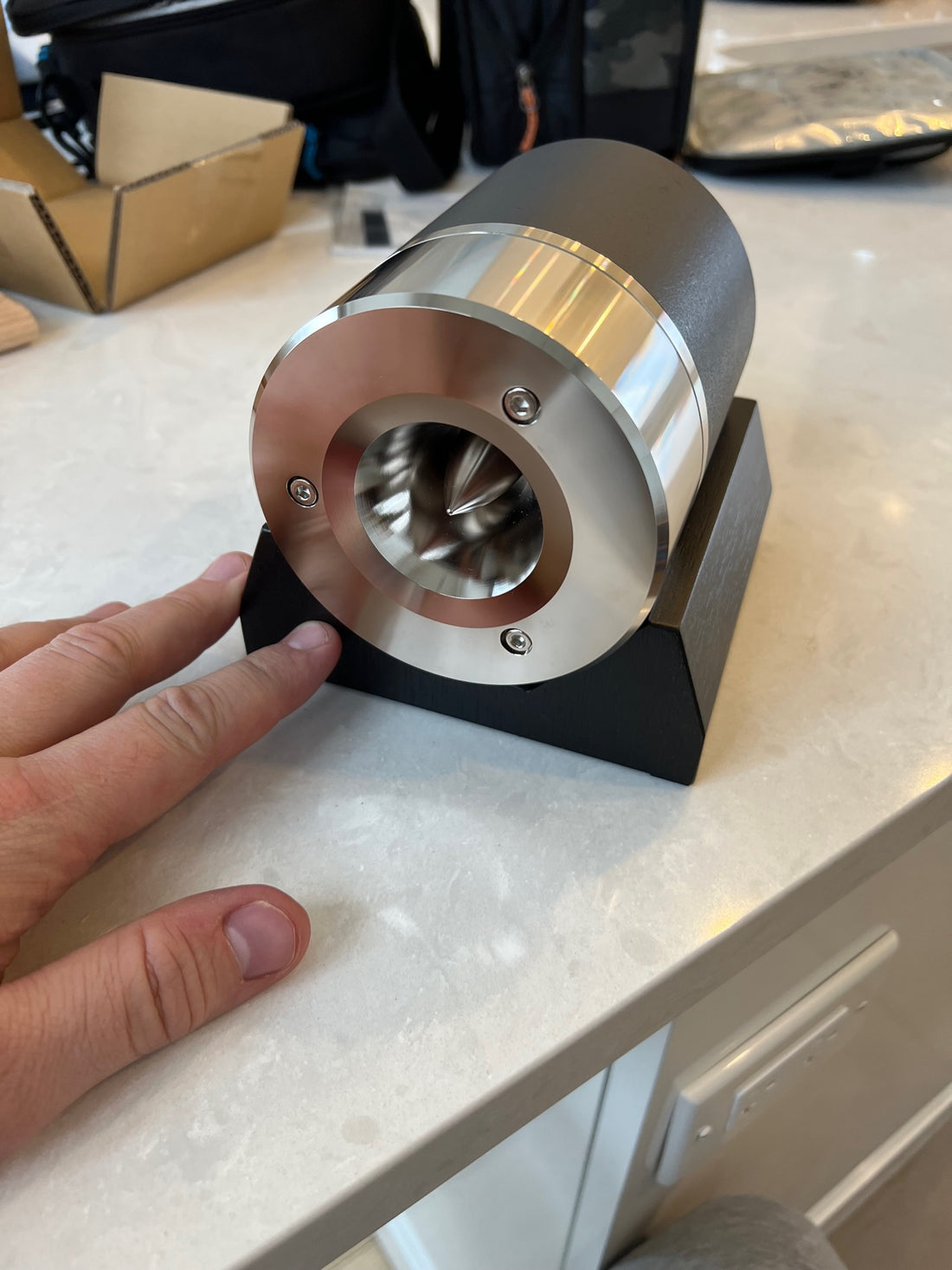I this blog post I test the Fostex T500A Mk.lll Super Tweeter with Horn No.2306.
This is a limited edition flagship tweeter from Fostex which was sent to me by one of my customers.
The driver is quite heavy and impressive to behold!
Features
- Double backed alnico magnets
- Copper shorting plate
- Magnesium diaphragm
- Solid wood cradle with rubber feet
- Attractive polished stainless steel front lens



Stock Tweeter
Below is the published frequency response on the stock tweeter.

I've adjusted my own measured response to match the vertical scaling of 120dB below.

However if I keep the vertical scaling to the normal 50dB then we get the following result.

For reference, below is my measured impedance sweep. The driver's FS is centered at around 3.1kHz while there is a much larger peak at 9.4kHz which I can't explain. Usually this suggests some kind of resonance but we will see if the other measurements bear this out. 
Off-Axis Colored Polar Map
We see a wide 120 degree listening window up to 10kHz but narrows quickly down to 60 degrees by 12kHz.

Time Domain
Burst decay shows some stored energy extending to around 10 periods.

To show the same data in a different manner is shown below. This sonogram is a little easier to identify the particular frequencies that may have resonance.

The burst decay sonogram (above) does not seem to indicate anything too serious in terms of resonances. After testing many drivers I've come to the conclusion that the audibility of such resonances are in question if they die off within 12 periods. This seems to be the case with the T500A Mklll with nearly everything dying off within the first 7 periods.
The CSD plot shown below reveals that everything does seem to dye off pretty quickly. This is quite a bit better than many compression drivers.

To highlight this, here is a small format compression driver (see below) that I recently tested. I decided to not not publish a blog on this particular compression driver due to the excessive resonances in the upper treble.

For the same driver as above, here is the burst decay sonogram for comparison to the T500A mklll. We can see that the resonances trail past the scale settings of the graph (35 periods).

Harmonic Distortion
Harmonic distortion was tested with a second order high pass filter consisting of a 1.0uF capacitor and 0.10mH inductor.
For the 85dB test signal, we see a spike in H2 (2.74%) at 10kHz but otherwise distortion remains low above 14kHz. Consider that H2 is benign in most instances, and could actually provide an subjective improvement. The fact that the higher order harmonics are almost touching 0.01% is a good indication.

Increasing from 85dB to 95dB we see H2 at 6.09% for the 10kHz region. Higher order harmonics remain relatively low at 0.339% for H3.
Intermodulation Distortion
For the intermodulation distortion test I rigged up a passive high pass filter consisting of a 1.0uF capacitor and 0.10mH inductor.
For the 85dB test signal level, IMD is at -58dB for the 10kHz region rising to -40dB for the 20kHz region.

I decided to simply test with a dual tone sine wave at 10kHz and 11kHz at the same 85dB SPL at 1m. This triggers a strong modulation artifact an octave higher. As you can see the IMD2 product is only -33dB below the F1 and F2 tones.

To confirm nothing was wrong with my test setup I swapped the Fostex tweeter out for the Viawave SRT7 ribbon tweeter.

Below is result for the tweeter shown. IMD1 is -70dB down against the F1 and F2.

Testing Horn Lens No.2306


Below is a comparison between the stock tweeter (red) against the horn lens No.2306 (blue). The response is shown with the high pass filter consisting of the 1.0uF capacitor and 0.10mH inductor.

Below is the burst decay sonogram using the 2306 horn lens.

For quick reference here is sonogram for the stock tweeter.

Below is the polar map for the horn lens No.2306. The horn lens provides a similar polar map however coverage has narrowed to 90 degrees.

For quick reference here is the stock polar map again.

Conclusion
The Fostex T500A Mklll has a peculiar resonance centered at 9.4KHz which introduces elevated levels of H2 for my 85dB test signal. This also introduces elevated IMD when tones are modulating out from this region.
Directivity remains wide and controlled for most of the bandwidth, narrowing above 11kHz.
Fostex's published data shows extension out to 30kHz, however I measured extension to only 20kHz.
The Fostex T500A Mklll seems to aimed at the luxury product market and doesn't offer any objective benefit to the lessor models such as the T900A reviewed here.
